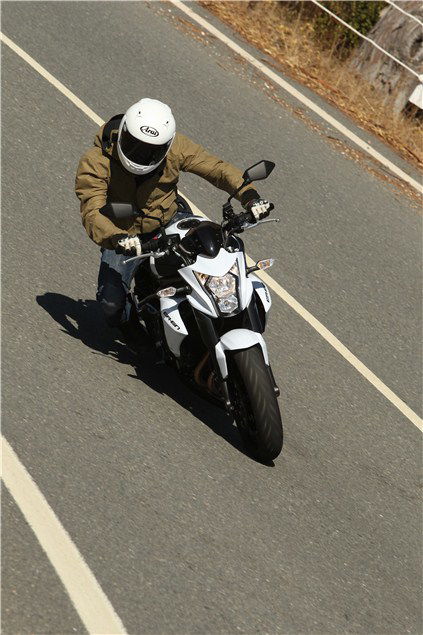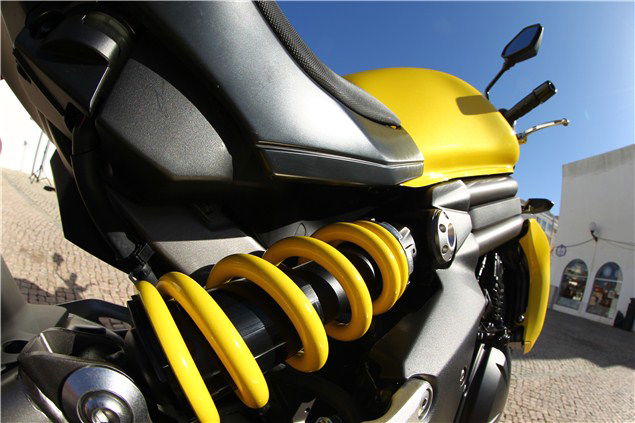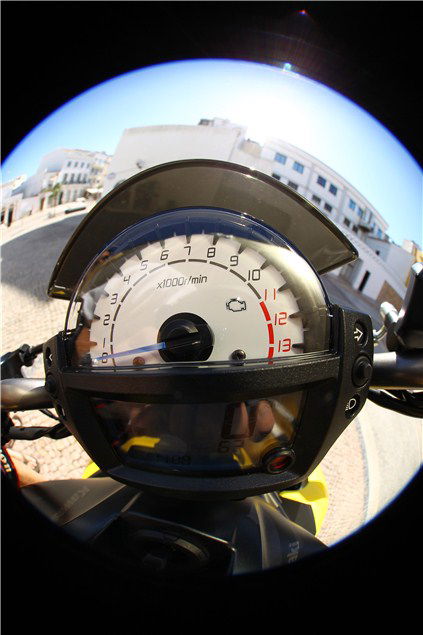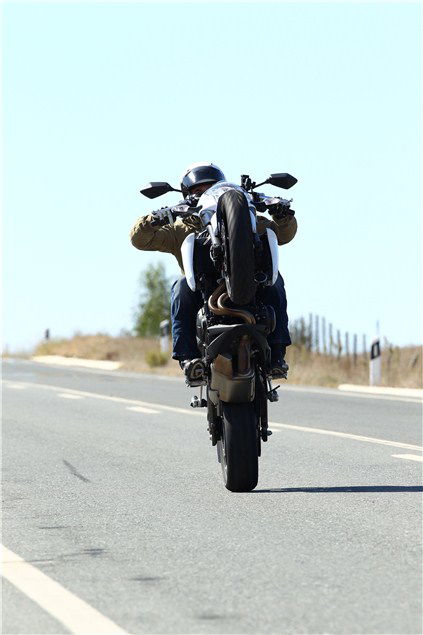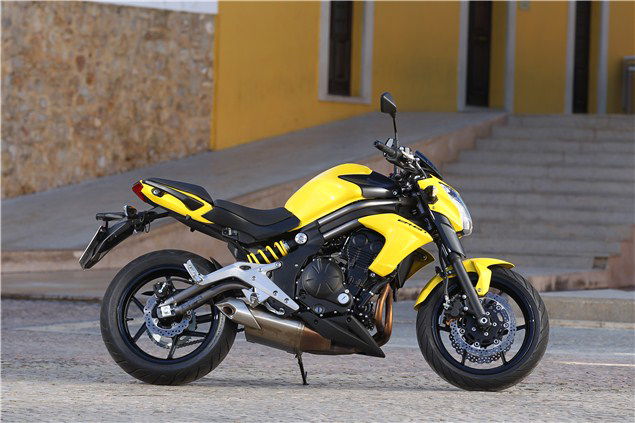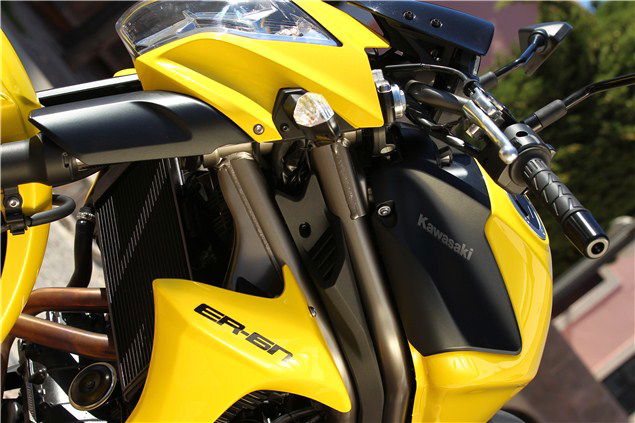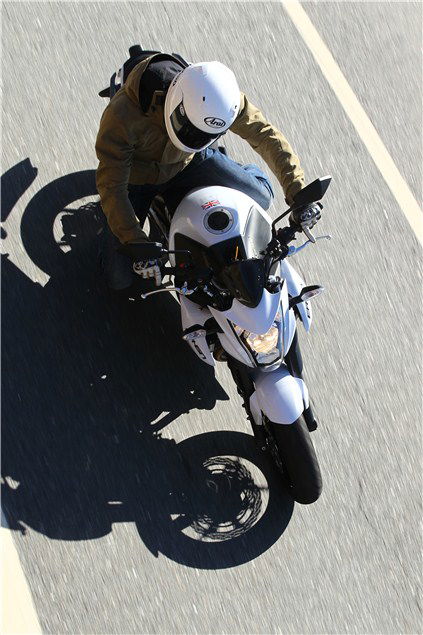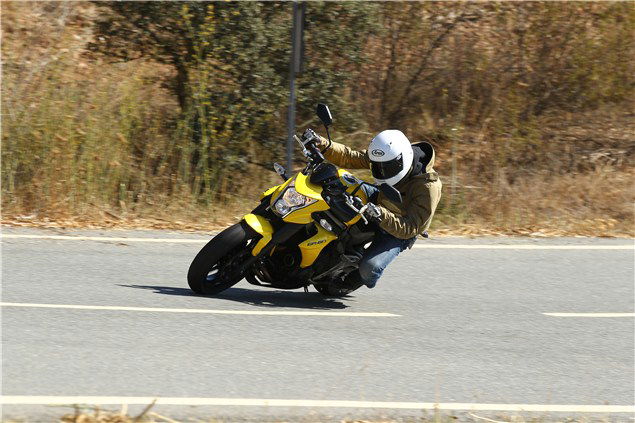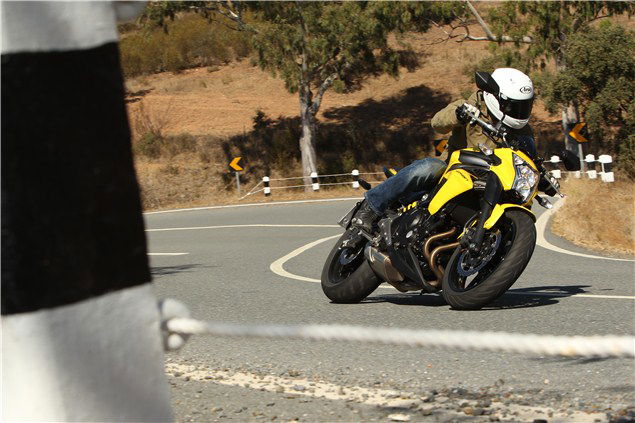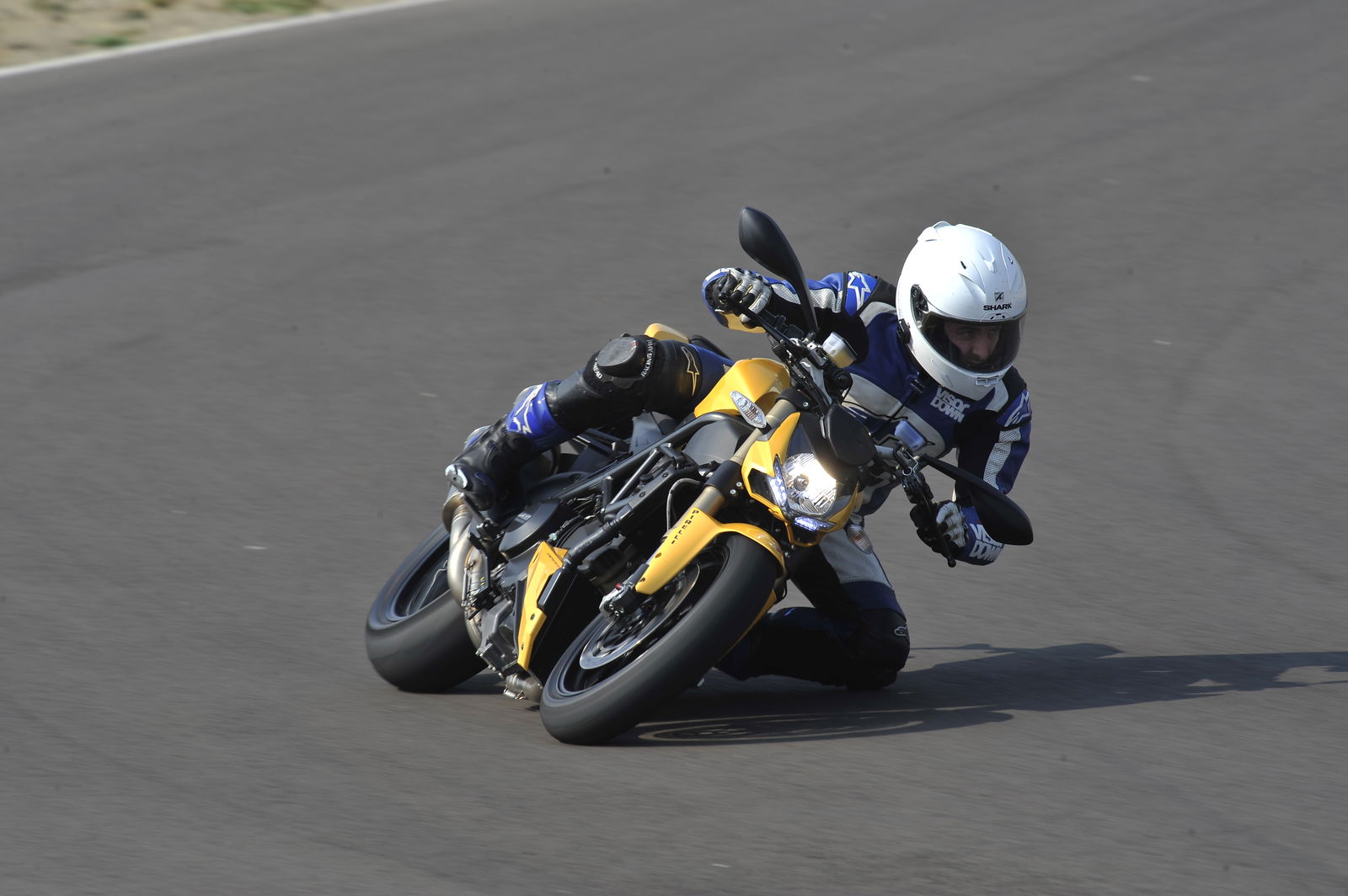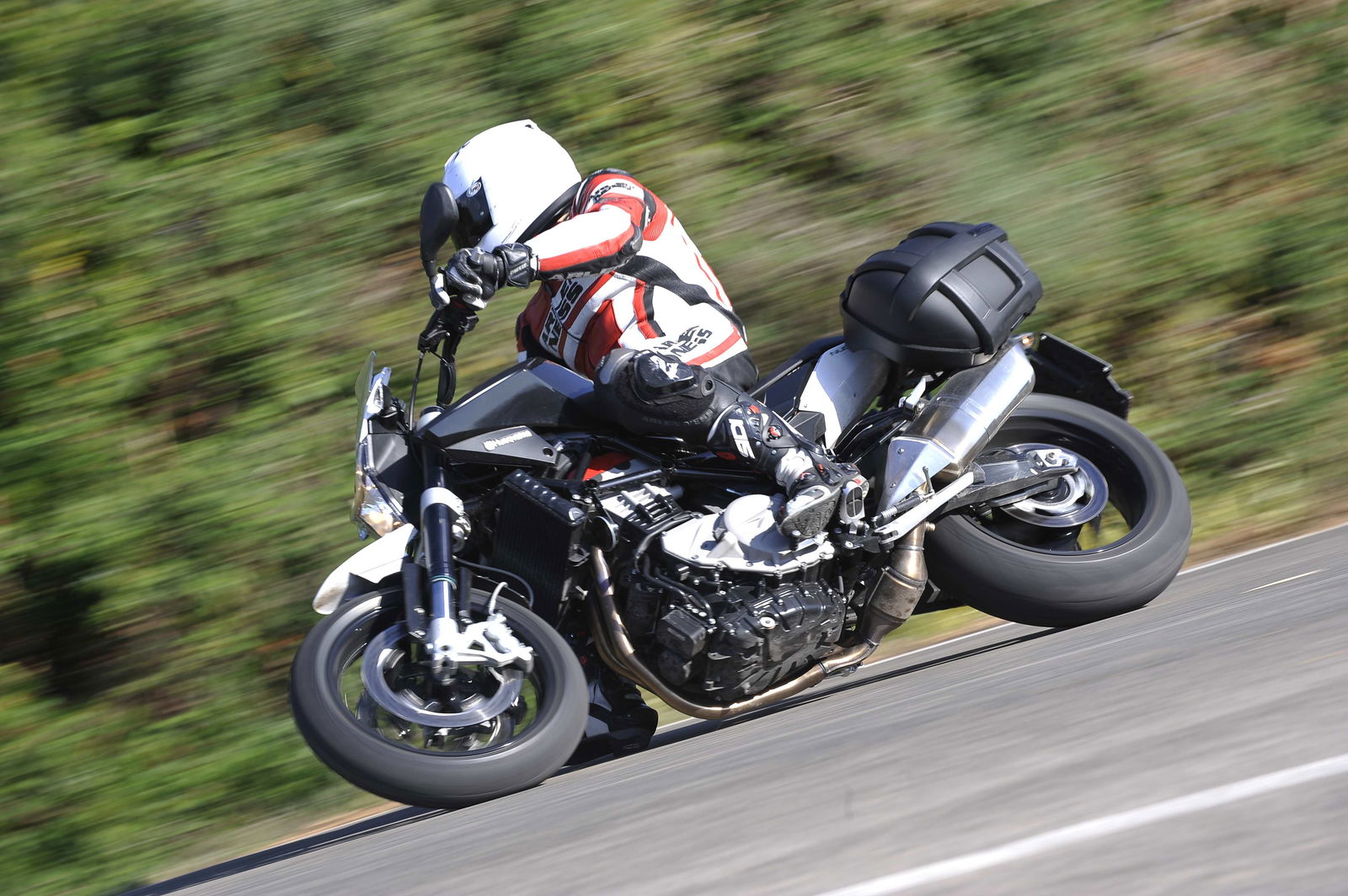First Ride: 2012 Kawasaki ER-6n review
Everyone loves the ER-6, will that still be the case with the updated new model?

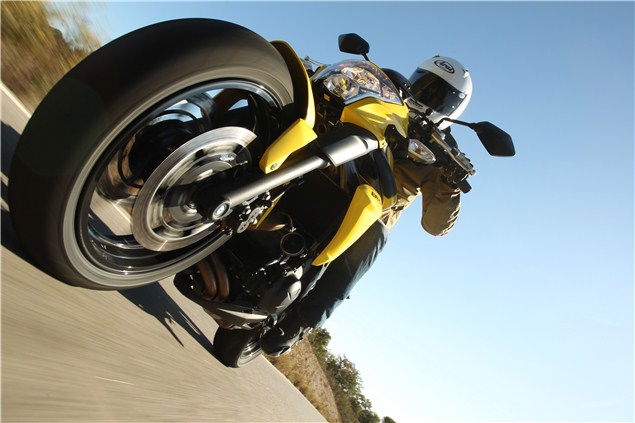
There's that old saying 'if it ain't broke, don't fix it' and sometimes, in their quest to make a good bike better, a manufacturer seems to forget that saying, instead they meddle with a successful formula and produce something entirely forgettable.
I can think of plenty of bikes that fit this mould but let's take the original Hornet. When launched it was the epitome of what you see is what you get honest motorcycling; solid, budget, capable and yet it had a real charm about it. It was an instant hit. Over the years, Honda have tinkered and changed its looks and with that, it's grown in price but not ability.
So when Kawasaki announced the new 2012 ER-6n and ER-6f was to be more than just cosmetic changes, I thought they might be trying to fix something that wasn't broken.
The ER-6n was launched in 2006, late on the scene for a 650cc twin - Suzuki had been at it for years - but the first ER-6n - like the Hornet in '98 - was an instant hit. The sort of bike you ride and think 'this is so obvious, why didn't they do it sooner?'. It felt short, stubby and managable. The engine had low-down poke but was eager to rev too. It wasn't excessive, which made it great for new riders but a good challenge for those with experience. It didn't have 150mph on tap - you had to work for your kicks.
So what are the major changes for the 2012 model? It's got revised styling, a completely new double-pipe frame and swinging arm, the downpipes are slightly longer, helping the engine produce a better spread of torque, the bars are 20mm wider and it's also got a slimmer chassis and seat which should help shorter riders get their feet down.
Seeing the bike parked up for the first time it looks sharp. Un-Japanese. It's got more of an aura about it than the last one.
Sat on the bike, you wouldn't know the bars are wider, they feel like a halfway house between clip-ons and flat bars. When Kawasaki said they were 20mm wider I didn't really stop to think how much 20mm was. Two centimetres you say? I was expecting twenty.
Pulling out onto the open road I couldn't help but think super-wide bars would give the ER-6n a more aggressive stance and give you more of a feeling of bossing the bike. All very well until you try commuting and then you end up tensing-up everytime you try and squeeze past a car wing mirror. Not-so-wide wide bars have their benefits, I suppose.
Despite my penchant for bars as wide as a washing line, the riding position for the new ER-6n is great once you're on the move; you've got enough weight over the front but the raised bars keep the weight off your wrists. At walking-pace you can feel the bike's weight but it shrugs this off once you're on the move.
Kawasaki claim 72bhp @ 8,500rpm and 47ftlb of torque @ 7,000rpm. The keen-eyed amongst you will notice the outright torque figure is slightly lower than the previous model but there's more torque across the rev-range now. I'd be lying if I said I could notice the difference but what's good is that Kawasaki haven't chased power and in doing so, sacrificed large lumps of the low-down torque that makes the ER-6 engine so usable. That would have been a meddle in the wrong direction.
In the pre-ride press conference Kawasaki kept using the word 'easy' to describe the ER-6n. Easy? What does easy mean I thought to myself. It's not so much easy, more accessible. The engine is forgiving; it doesn't matter too much what gear you're in. Pulling out of tight bends it didn't matter whether I was in 2nd, 3rd, or 4th. Sure it made a difference to response but the engine didn't feel like it was going to explode into a thousand pieces when rolling on in 4th from 25mph. There's plenty of low-down torque, which you'd expect from a twin, but the way it revs is surprising. At around 8,000rpm bom-bom-bom of two cylinders morphs into a frantic buzz as the rev-needle reaches the 11,000rpm redline.
With next to no adjustability, the suspension is at the budget end of the scale but feels smooth and predictable. Over some of the Portuguese roads that weren't funded by the EU, and were therefore quite bumpy, the ER-6n was definitely half a step-behind, but that's no different to the previous model and in no way disconcerting. It ploughs on through with little more than an entertaining shake of the head.
Through town it's firm and agile, it feels slender, the mirrors are well positioned and give a good rear view and the riding position puts you in control. There's no fluff low-down in the rev-range. It's everything you want in order to nip around traffic and fire through gaps. Fortunately we didn't spend too much time in town, because the back roads are where the fun's really had on this new model.
On our first day, we covered around 150-miles, mostly around twisty country roads. Looking back at it, the pace was fairly hot and yet not once did I think the ER-6n wasn't capable of what I was asking of it. That's another great thing about this - and every - ER-6: they're a lot of fun, even for the more experienced rider.
Tucked into the slipstream of Fast Bikes magazine's tester, I saw 218kmh on the clocks. Without the aid of 'West Country' slipstream aids others claimed 206kmh. That's good going for a 650-twin. While we're on the subject of clocks it's worth mentioning they're excellent. Don't ever change them Mr Kawasaki. An in-your-face analogue rev-counter above a digital speedo: it doesn't get better.
If fuel economy's your thing then you'll be pleased to know that in top gear at 80mph the ER-6n was returning 53mpg. That'll do nicely.
So what's not so good about the ER-6? One thing: the brakes. Are they not so good because I'm a spoilt journo whose weak fingers can only muster serious braking forces from a Brembo-monobloc or are the brakes just a bit weak? I'm afraid it's the latter. There's not a lot of initial bite and just a fraction too little stopping power for my liking. Nothing a set of braided brake lines and sintered pads wouldn't fix but underwhelming brakes came as standard on the original bike and you'd have thought Kawasaki would have improved them by now.
It's fair to say there's been plenty of meddling with this new ER-6n but the changes make the bike more accessible and easier to live with day-to-day.
Whatever the level of your riding, you can jump on the new ER-6n and get stuck in. That's a formula loads of manufacturers have strived for over the years but failed to reach.
So that's it then. The 2012 Kawasaki ER-6n: it still ain't broke.
See the 2012 Kawasaki ER-6n official accessories here. See the 2012 Kawasaki ER-6n official colours here.

